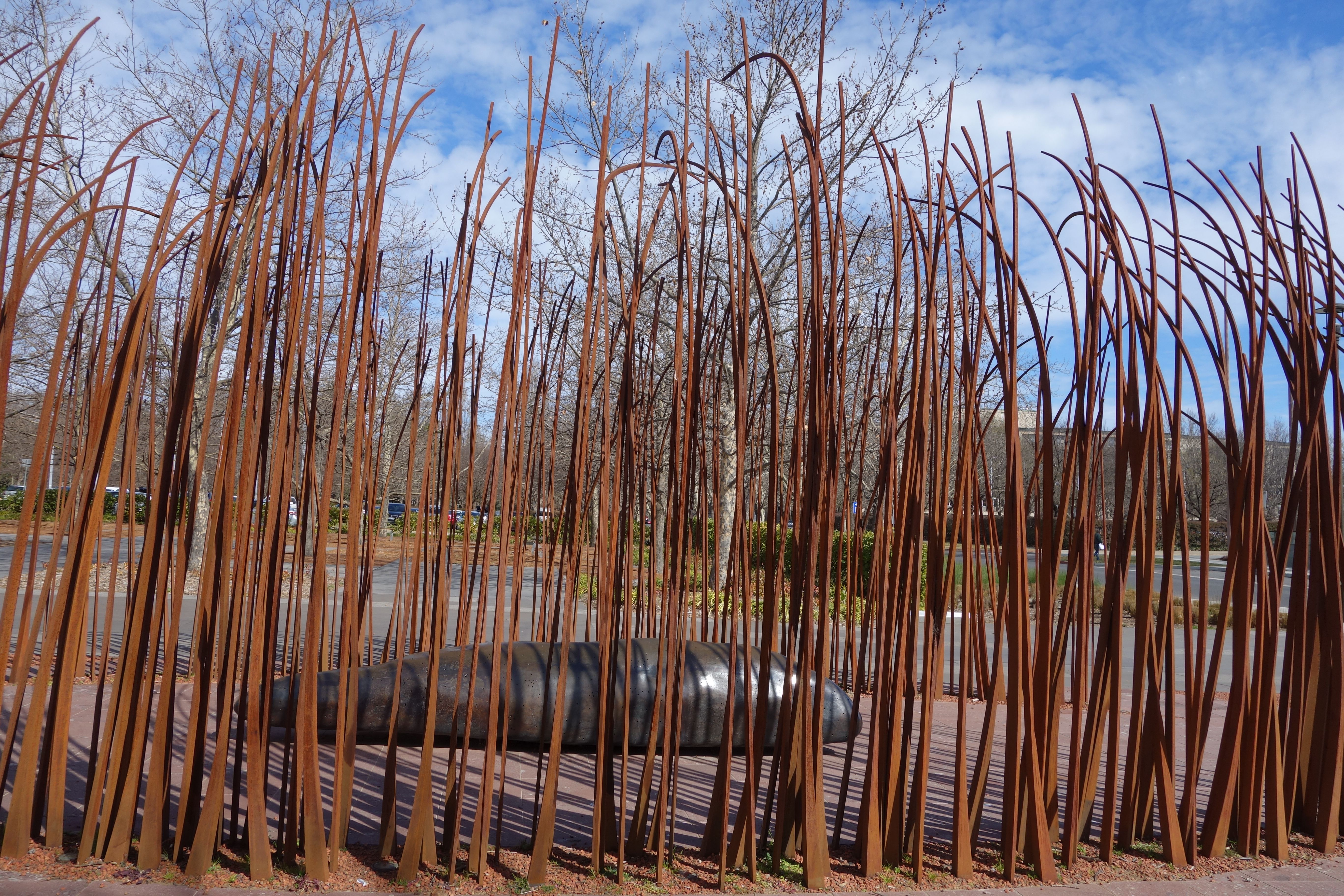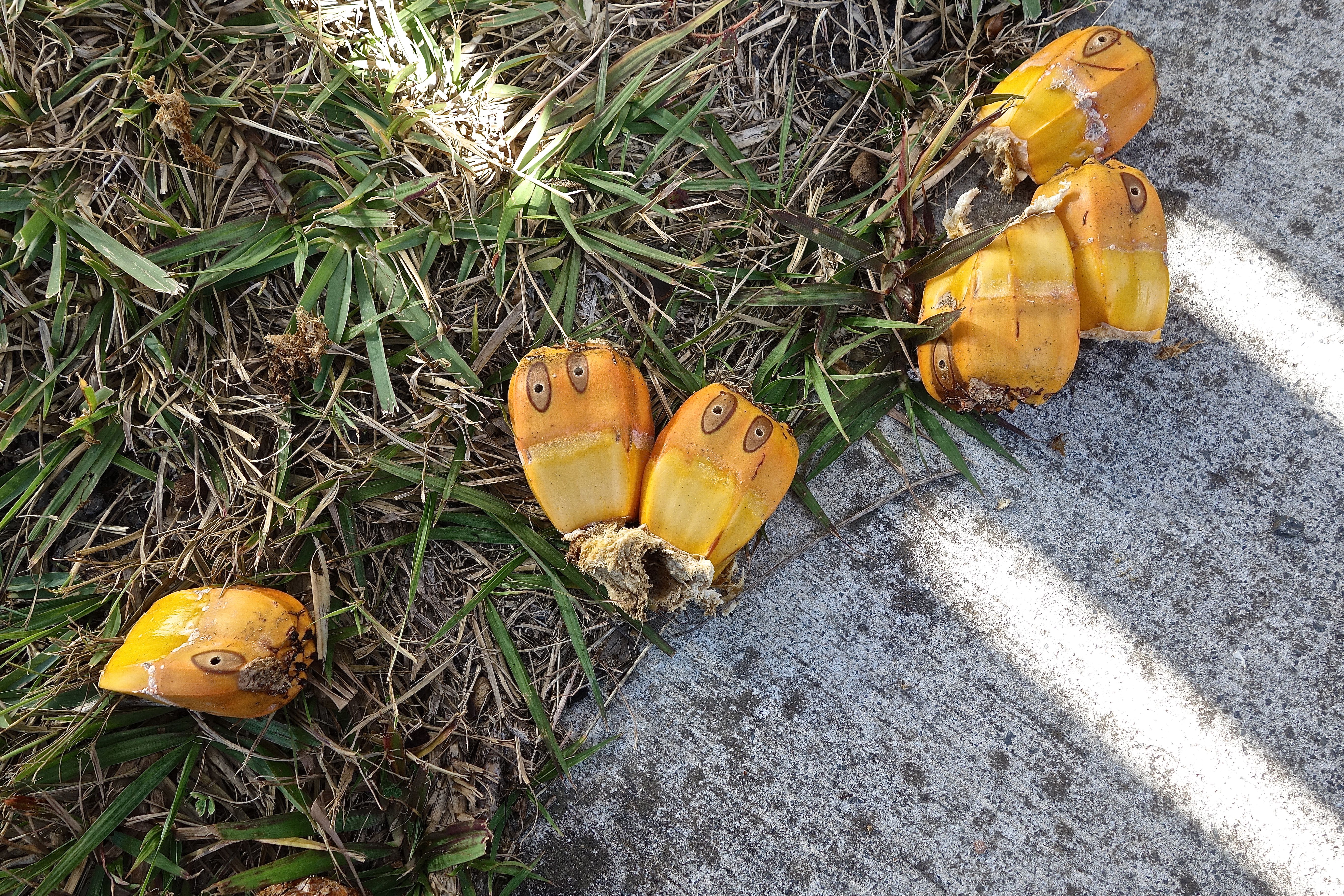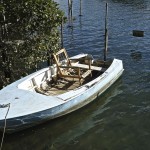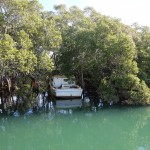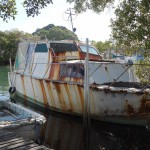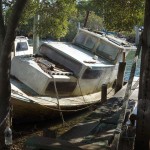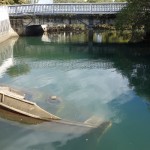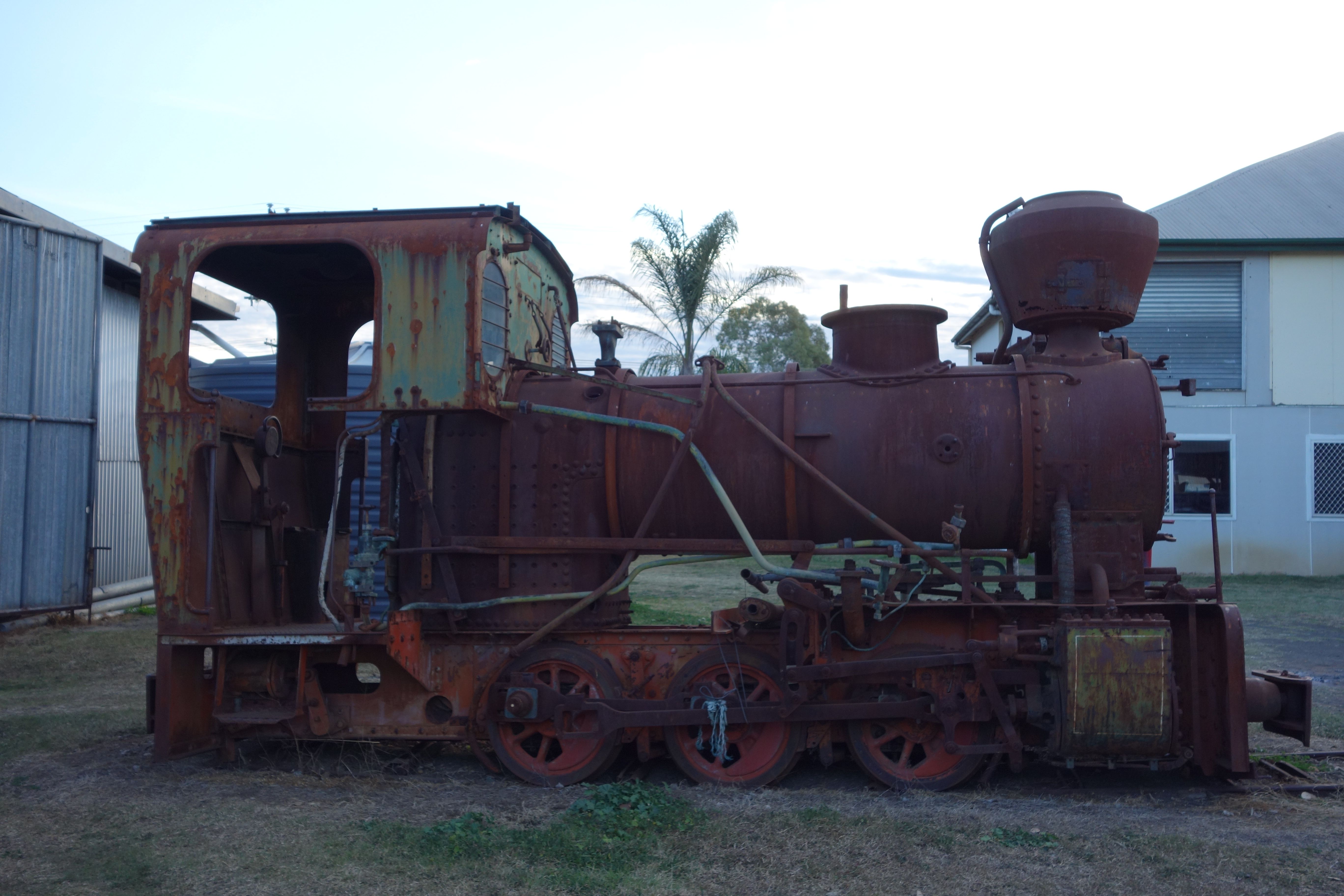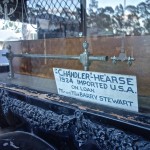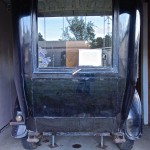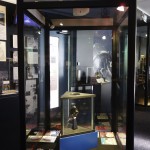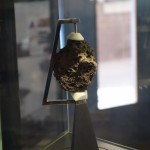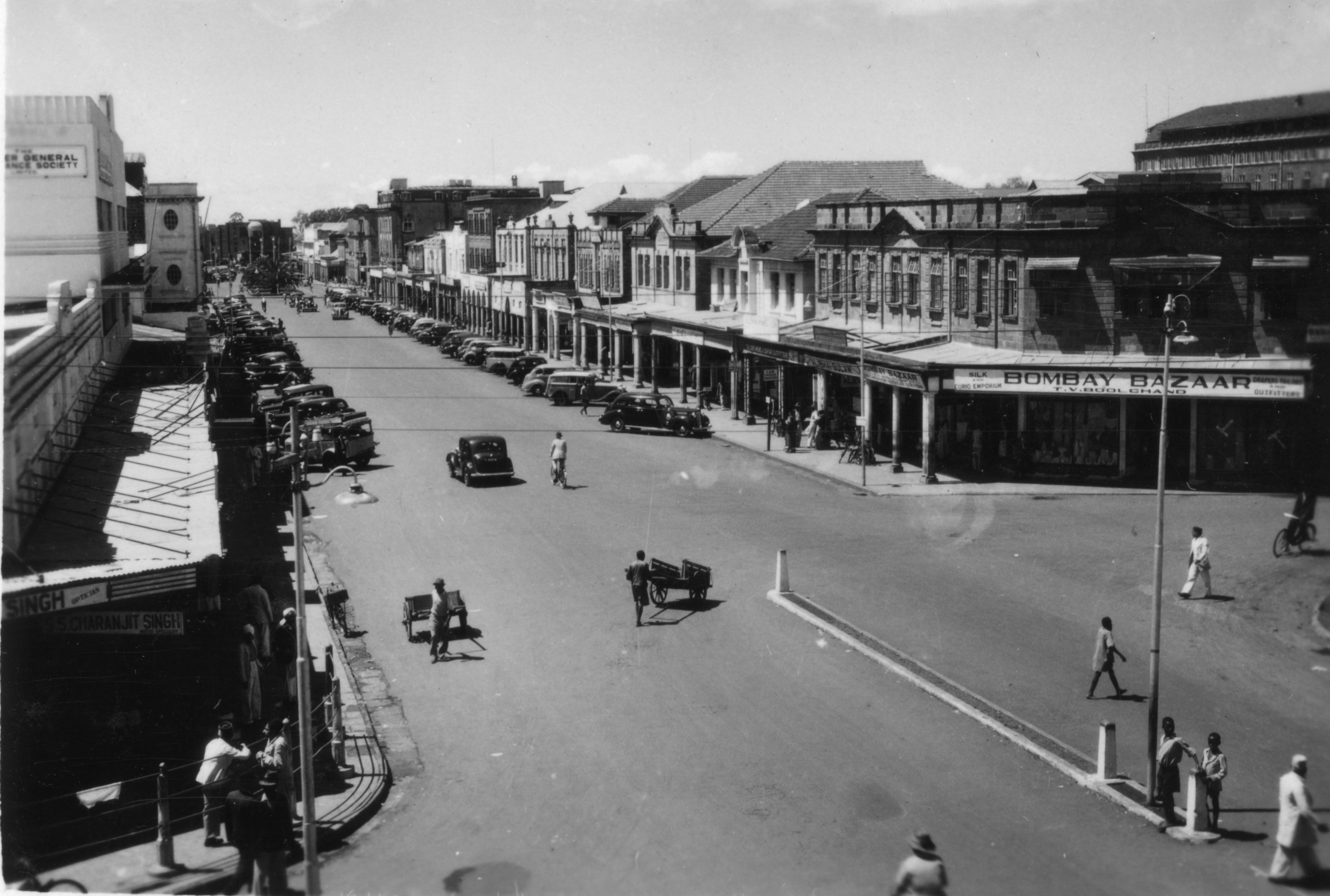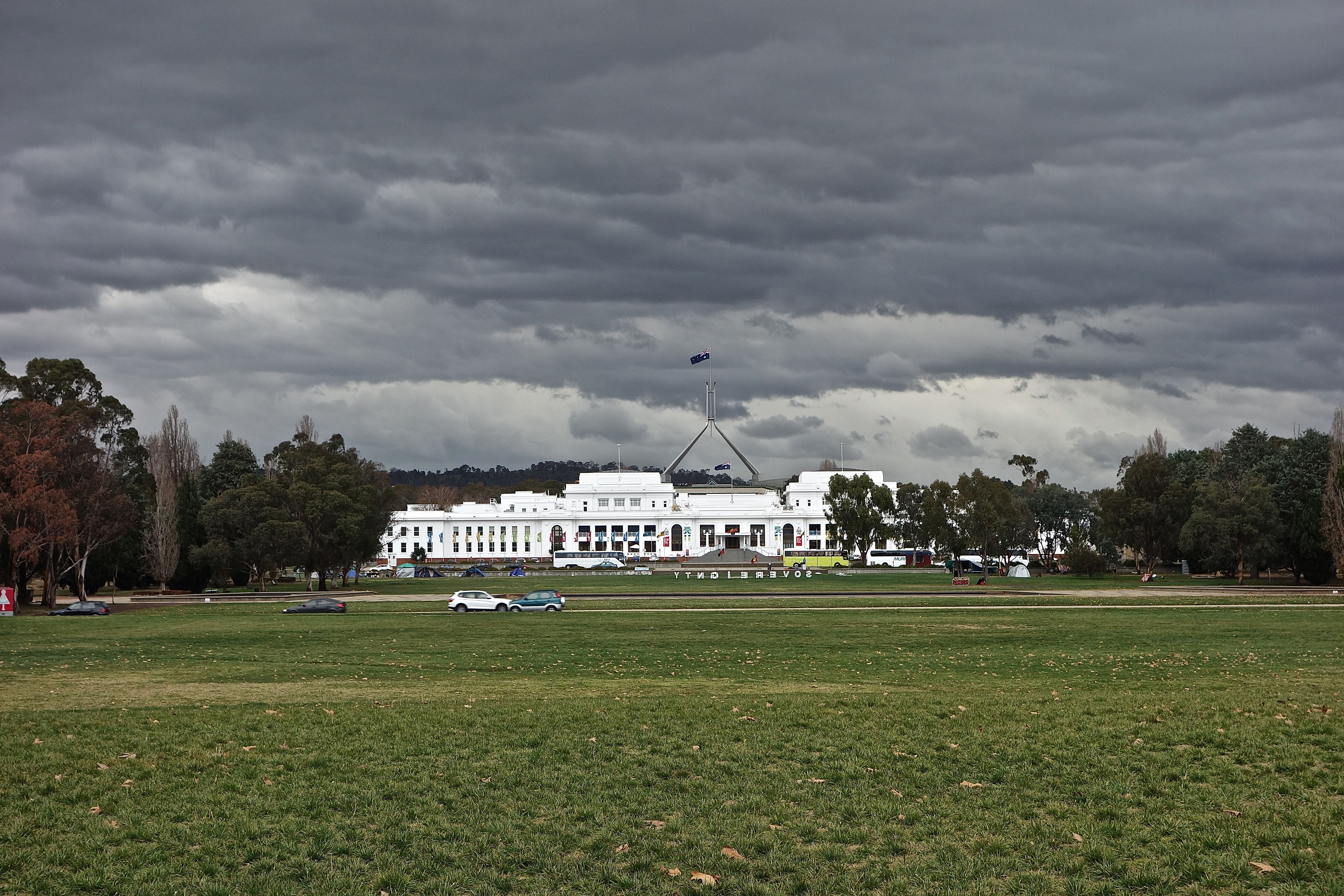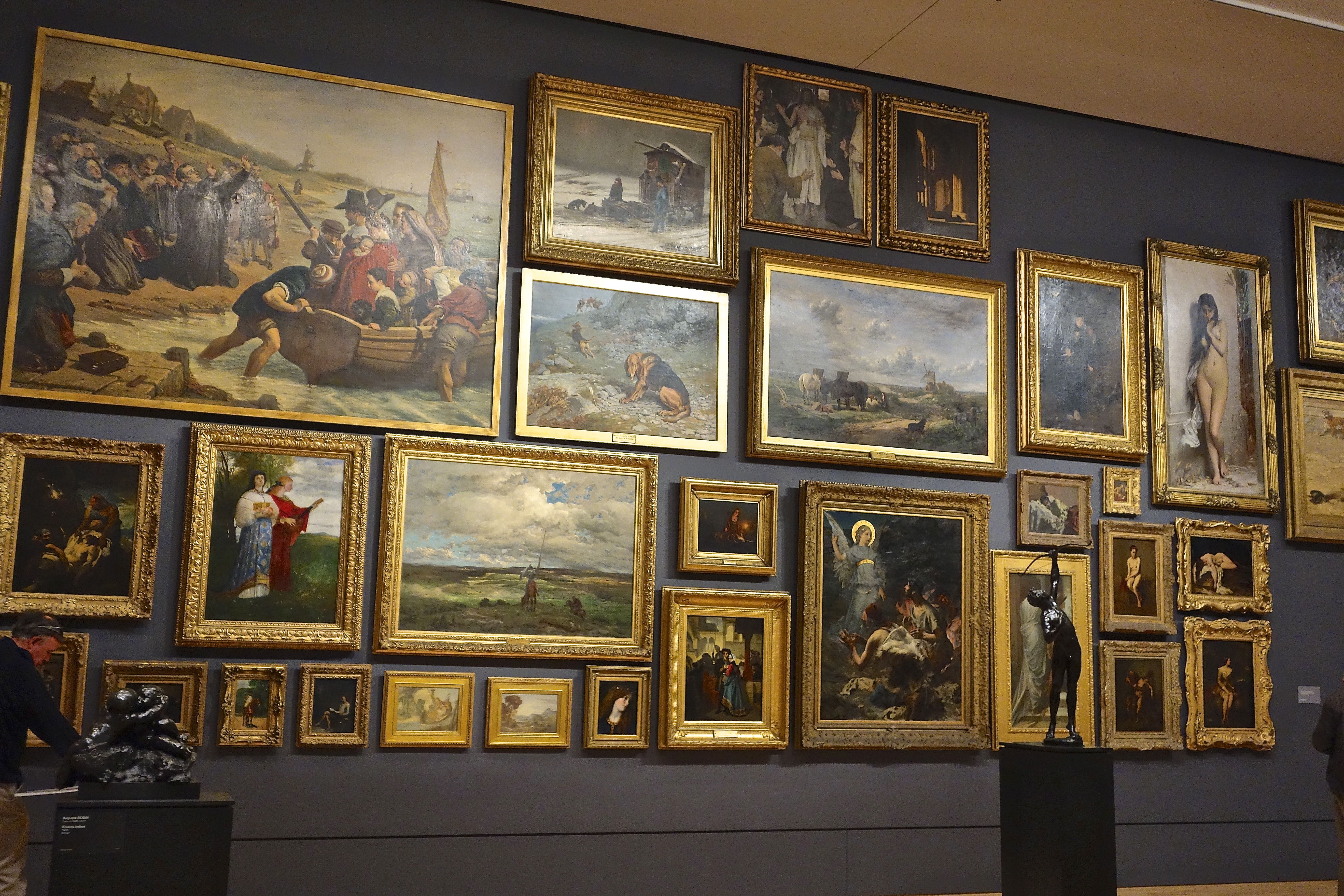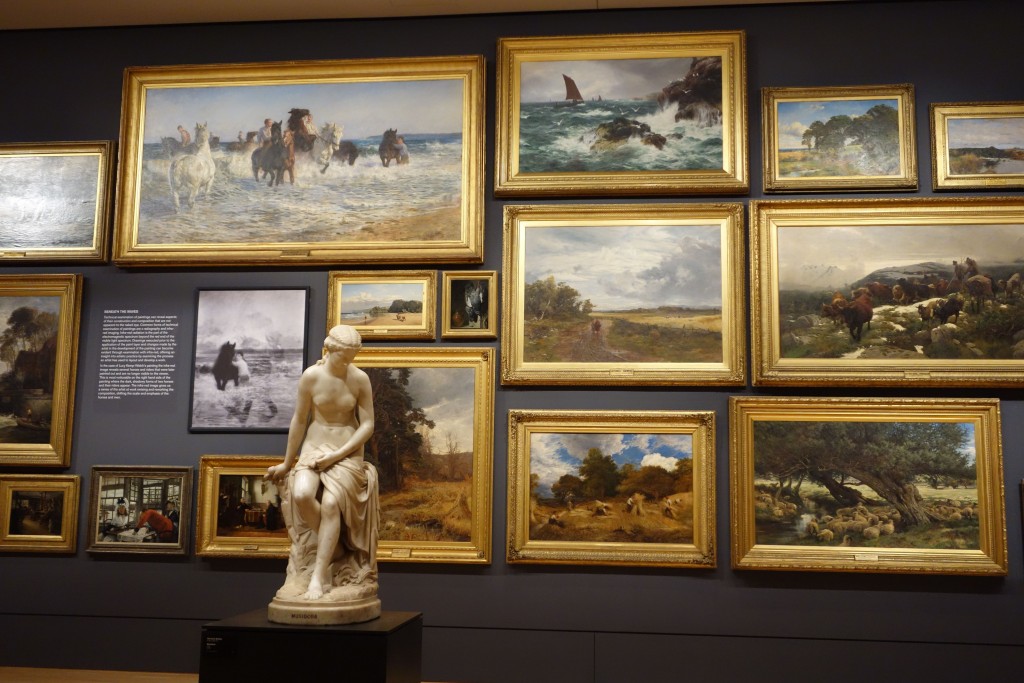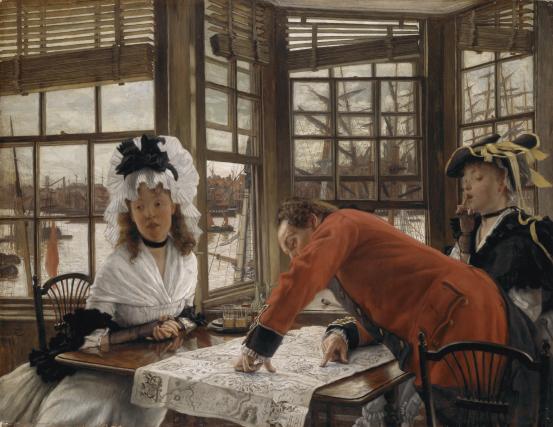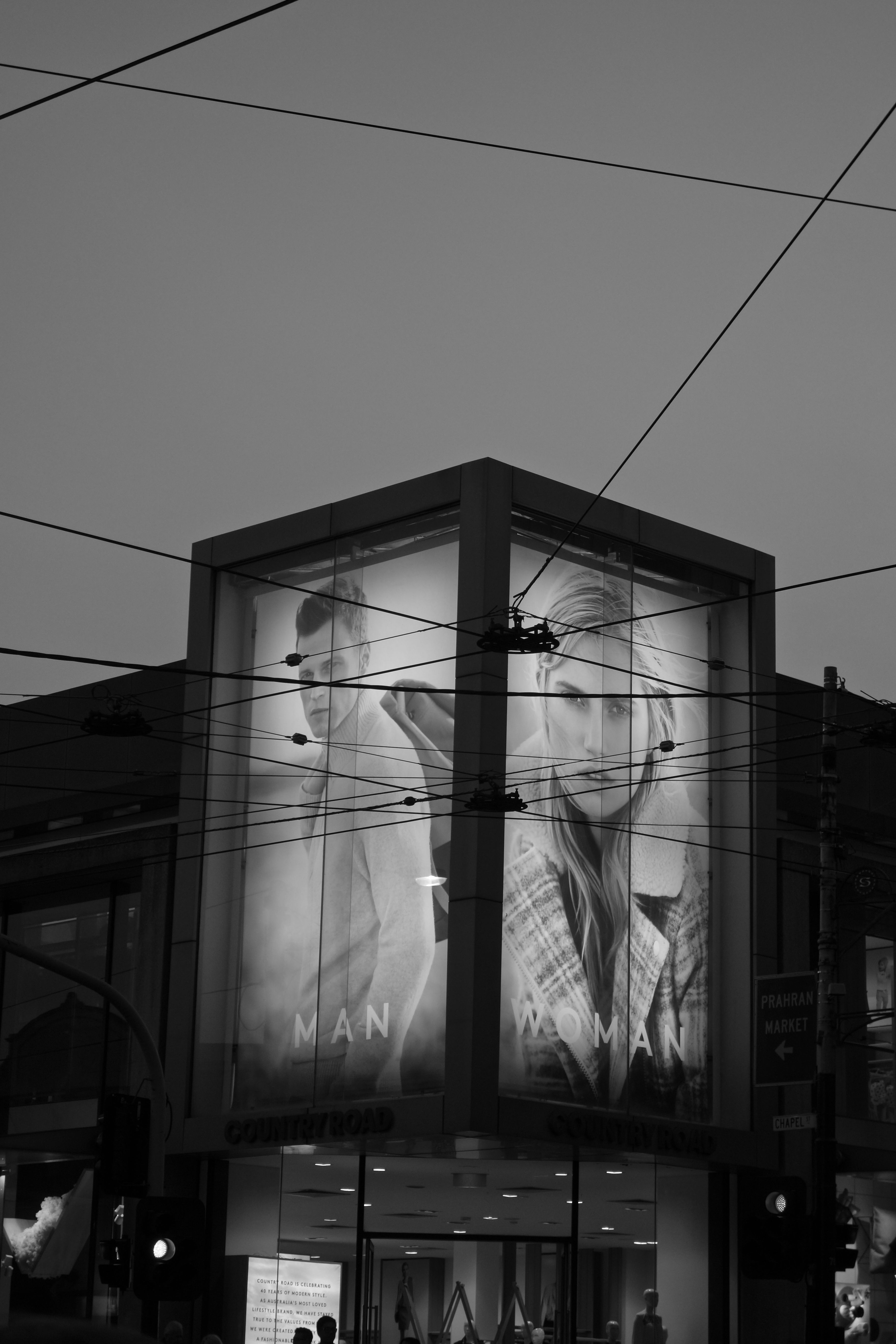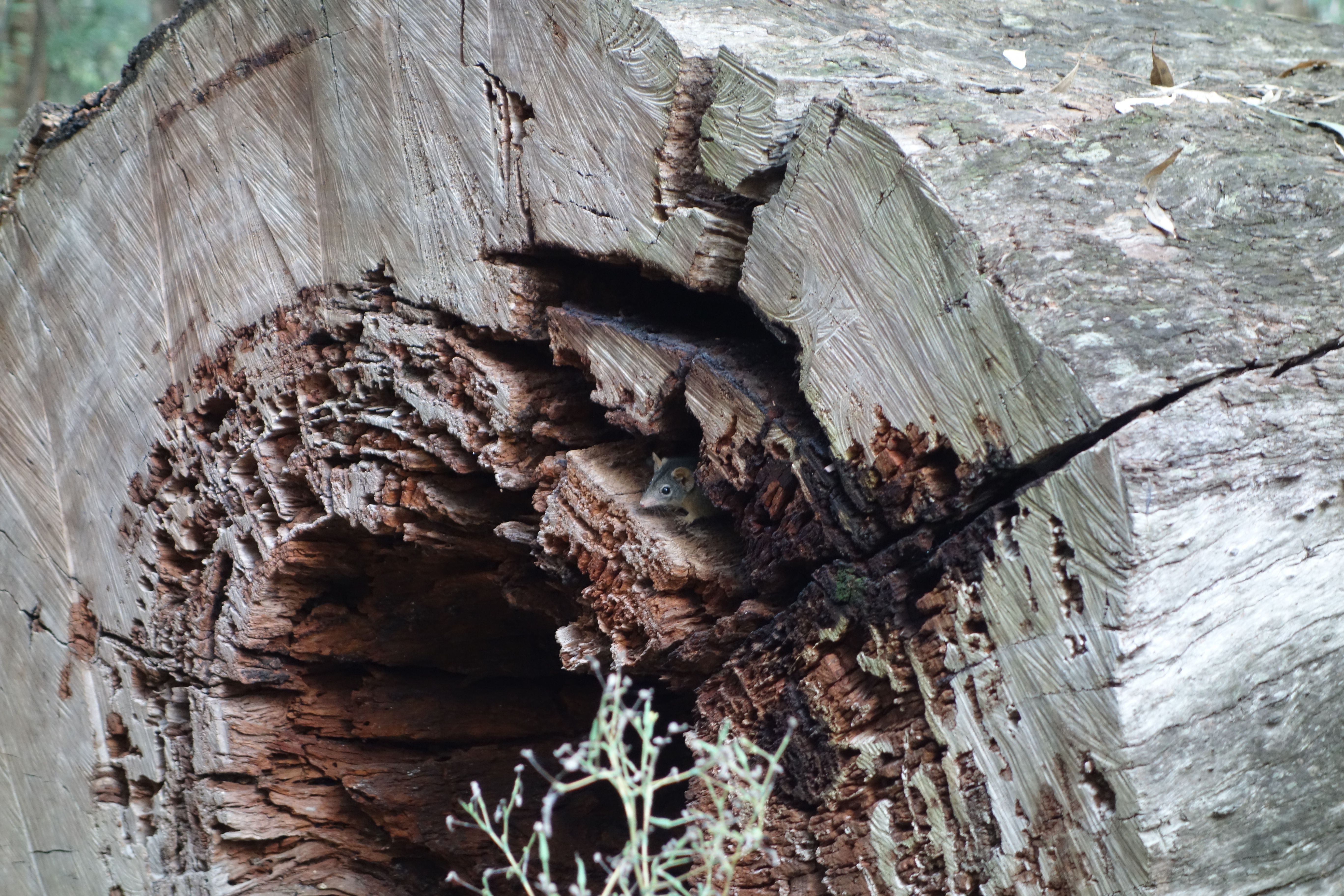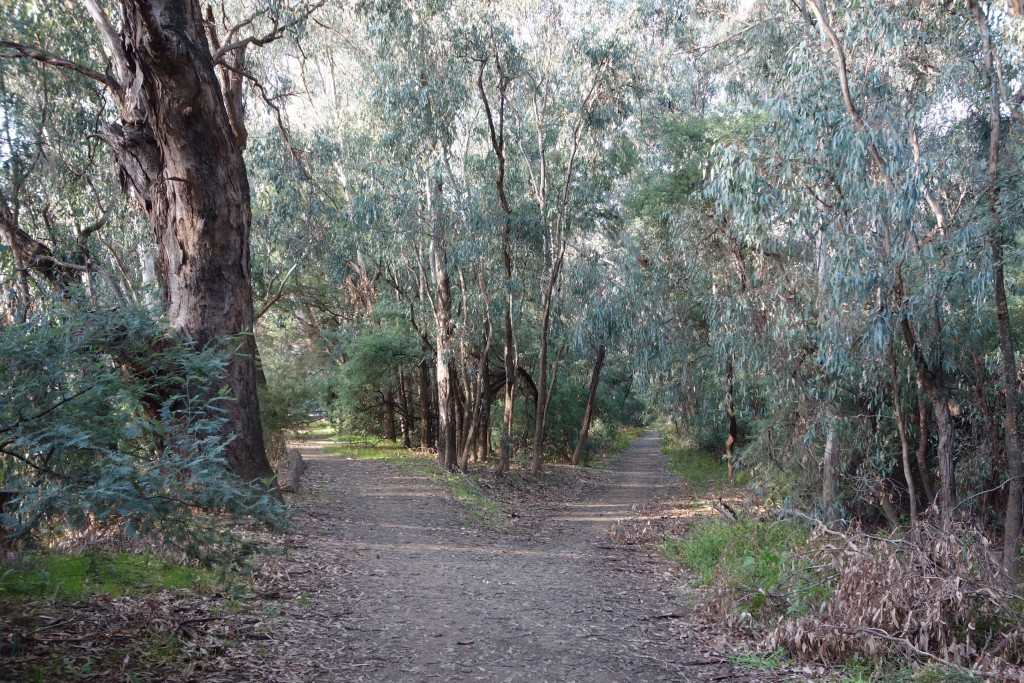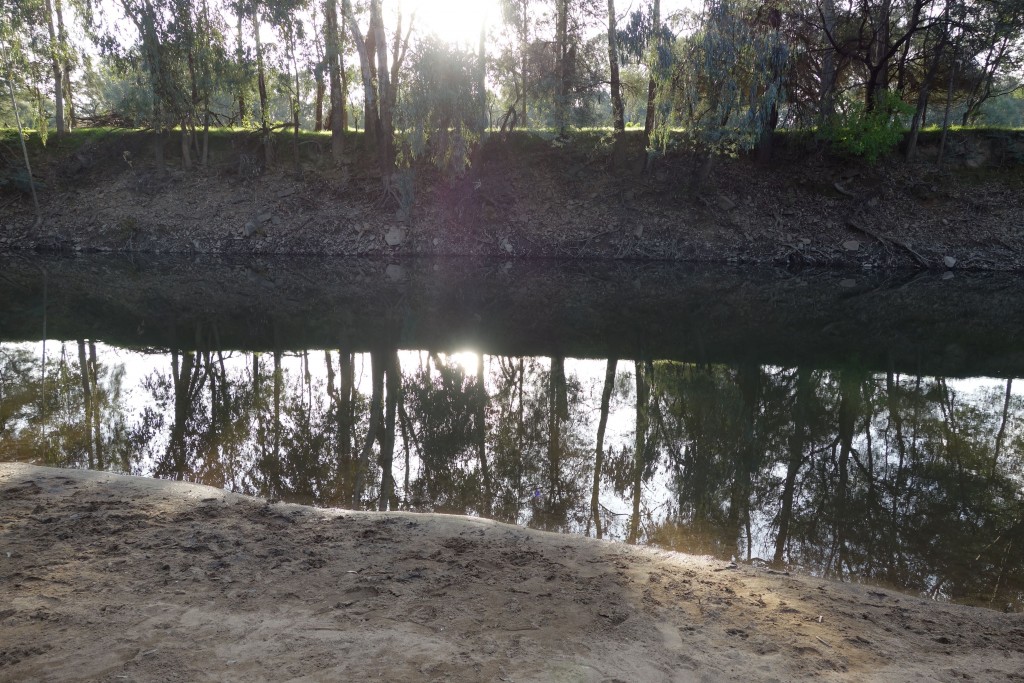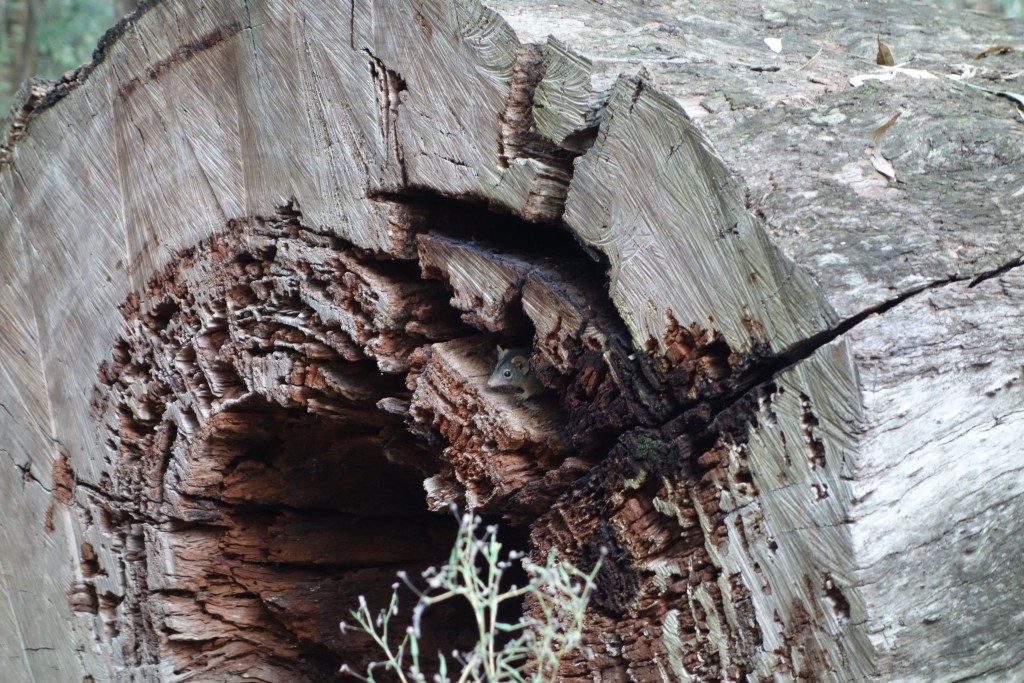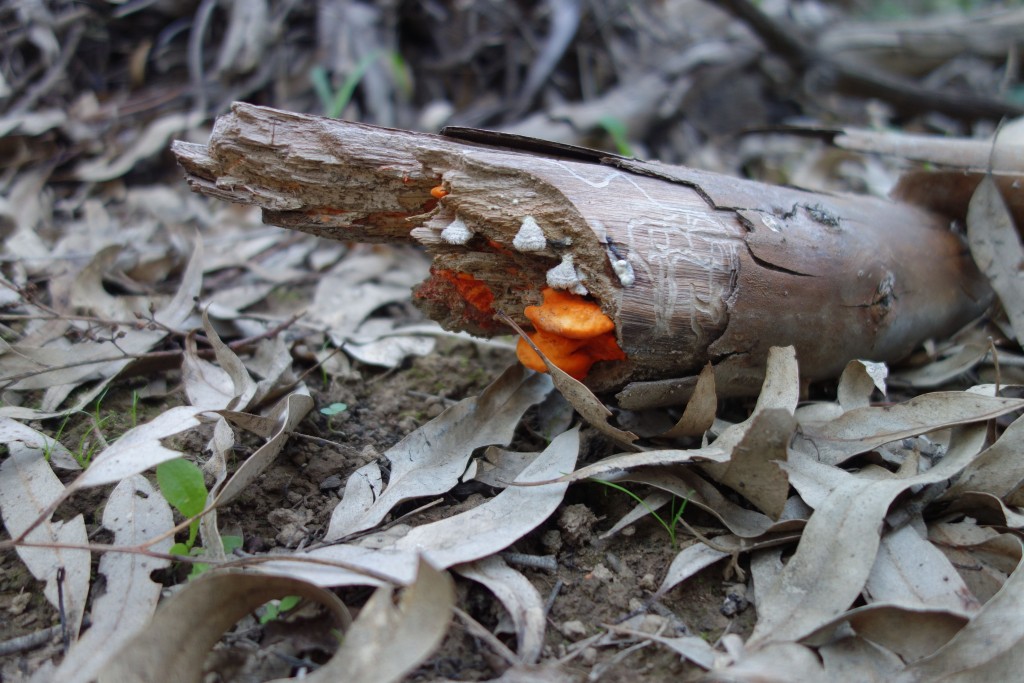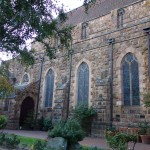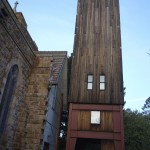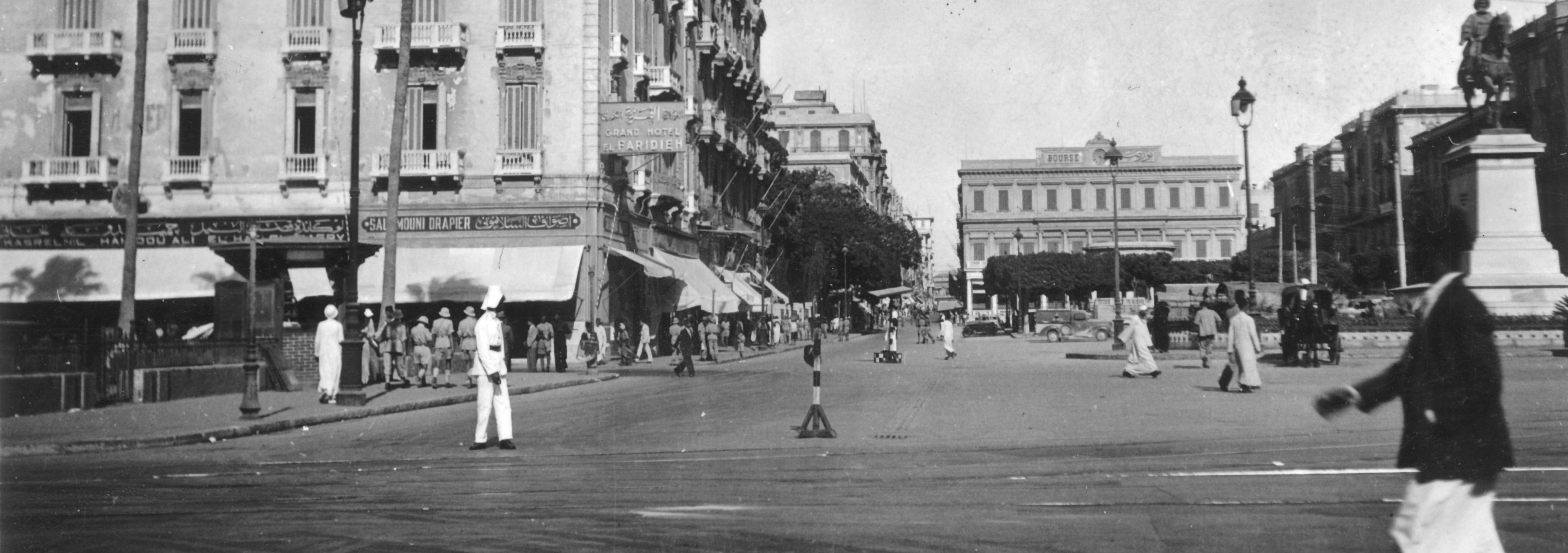Judy Watson, an indigenous artist, created this sculpture, Fire and Water. It’s textural…

You’ll find it in Reconciliation Place, Canberra, where there are a number of sculptures by Aboriginal artists. Since this particular artwork is called Fire and Water, I’d always thought the grey object amid the fiery reeds represented a seal or dugong. But on closer inspection today, I saw it’s not an animal, but a stone. A gathering stone. Muted sounds are constantly playing through small holes all over it, representing bogong moths flying in on their annual migration and people gathering to feast on them. Michael Hewes designed the sound.
Looking between the two stands of rusty reeds, we see the National Library, one of my favourite haunts. In this wintry season, the reeds echo the hibernating poplars in the library forecourt. At the moment I took this photo, two jets in the fountain were working. That was just luck; the fountain is not always turned on. The elements in the photo are a great example of symmetry in this city of many symmetries.

Bogong moths pass through Canberra every year in about September. Last year they were in plague proportions, congregating on many of the national institutions in the parliamentary triangle, and particularly in Parliament House. At night they’re attracted to the powerfully lit flagpole on top of the House. We all had moths flying and dying in our homes, which was annoying for those of us who don’t eat them.
Since we’re thinking of texture for this week’s photo challenge, take a look at this image from another Canberra photographer, Donald Hobern, of a bogong with its fluffy head and carpet-like wings. When they land on tree bark they’re well camouflaged. But I can tell you, while one individual moth might look beautiful in a close-up, a crowd of brown, fluttering moths resting up in a corner of your room is not attractive. But thanks to Judy Watson’s sculpture, I learnt that they’re edible, and even delicious, and I was reminded once again that nothing is completely ugly or useless.

Take a look at more textures on the WordPress photo challenge page for this week.

